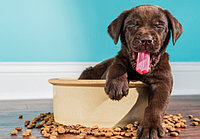High-Quality Pet Food for Dogs and Cats: What You Need to Know
High-Quality Pet Food for Dogs and Cats: What You Need to Know
Blog Article
As pet owners, all of us want the best for furry companions, and that starts with their nutrition. High-quality pet food plays an important role in ensuring medical, energy, and longevity of both monkeys and horses. However, which has a vast array of options on the market, it can be overwhelming to choose the very best product to your pets. This article will direct you through the key considerations when deciding on Tail Treats and the benefits it provides for your dogs and cats.
Why High-Quality Pet Food Matters
The food that the pet consumes directly impacts their well-being. Just like humans, pets need a balanced diet with essential goodness to thrive. High-quality pet foods are created to meet these nutritional needs, offering the right combination of proteins, fats, carbohydrates, vitamins, and minerals. This ensures that your particular pet maintains a healthy weight, has a strong defense mechanisms, a shiny coat, and healthy skin, and enjoys overall vitality.
On the other hand, lower-quality foods often contain fillers, artificial preservatives, and by-products offering little to no nutrients and vitamins. These can bring about health issues like obesity, allergies, flatulence, and in many cases long-term chronic conditions.
Key Ingredients in High-Quality Pet Food
Protein Sources The primary ingredient in almost any high-quality pet food should be protein, that helps build and repair tissues, support the body's defence mechanism, and look after muscle mass. Look for real, named animal proteins like chicken, beef, fish, or lamb because first ingredient. Avoid vague terms like "meat meal" or "animal by-products."
Whole Grains or Grain-Free Options Depending on your canine friend’s needs, you'll be able to opt for foods offering whole grains like brown rice, oats, or barley, which give a good source of energy. Alternatively, grain-free diets are available for pets with sensitivities or allergies. In such cases, vegetables like sweet potatoes and peas are employed as carbohydrate sources.
Healthy Fats Healthy fats, for example omega-3 and omega-6 fatty acids, support skin and coat health while also providing energy. Look for ingredients like fish oil, flaxseed, or chicken fat in your pet’s food.
Natural Preservatives and Additives Avoid pet foods that use artificial preservatives, colors, or flavors. Instead, look for natural preservatives like vitamin E (tocopherols) or vitamin C. These are gentler on your pet’s body and less likely to cause adverse reactions.
Limited Ingredients for Sensitive Pets If your family pet has food sensitivities or allergies, high-quality limited-ingredient diets can be purchased. These target a smaller report on simple, natural ingredients, decreasing the risk of triggering allergies or digestive issues.
The Benefits of High-Quality Pet Food
Improved Digestion High-quality pet foods are easier to your pet to digest, ultimately causing better absorption of nutrients. This can reduce problems like vomiting, diarrhea, or gas, which can be common with low-quality or inappropriate foods.
Better Skin and Coat Dogs and cats fed a nutrient-rich diet often display a shiny, healthy coat and fewer skin problems. Ingredients like omega-3 efas from omega-3 fatty acids play a substantial role in maintaining a lustrous coat and minimizing shedding.
Increased Energy and Vitality Feeding your pets high-quality food ensures they obtain the right balance of proteins and fats, promoting healthy energy levels. Whether it’s a playful kitten or an active dog, their diet program significantly impacts their stamina and overall liveliness.
Weight Management Obesity is a type of issue in pets, but high-quality food with balanced portions will help maintain a healthy weight. These foods give you the right balance of calories, helping your dog feel full and satisfied without overeating.
Enhanced Longevity and Overall Health A proper diet might help prevent health issues, from joint problems to coronary disease. With the correct nutrients, your pets are more more likely to enjoy a longer, healthier life, free of the complications that usually arise from poor-quality food.
How to Choose the Best High-Quality Pet Food
Check the Label: Read the ingredients list carefully. High-quality pet food lists specific options for proteins, grains, and fats. Avoid foods with vague terms or artificial additives.
Consult with Your Veterinarian: Every pet is different. Factors like age, breed, weight, and then for any underlying health problems play a role with what type of food is best for them. Always seek advice from your vet to tailor your furry friend’s diet for their specific needs.
Look for Brands with a Good Reputation: Reputable brands often invest in research and testing to be sure their food meets the best standards. Look for brands which are transparent about their sourcing and manufacturing processes.
Monitor Your Pet’s Health: Once you start feeding your canine friend a new food, look closely at changes in their energy, coat, and digestion. This will help you determine whether the food is a good fit or if adjustments are needed.
High-quality pet food is essential to keeping your pet healthy, energetic, and happy. By focusing on the right ingredients and providing proper diet, it is possible to significantly enhance your dog’s quality of life. While it could possibly be more expensive than lower-quality options, investing in your furry friend’s diet today can result in fewer health problems and vet bills around the road—giving both of you more time together and ensuring your pet enjoys a good, vibrant life.